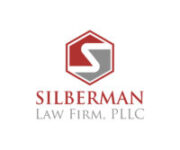
When seeking attorney’s fees, the general rule is that a claimant must provide evidence of the number of reasonable hours worked multiplied by a reasonable hourly rate. This is known as the lodestar method and requires a claimant to provide sufficient evidence for both rate and hours.
In April of 2019, the Texas Supreme Court provided clarification in Rohrmoos Venture v. UTSW DVA Healthcare on how to calculate attorney’s fees from the base lodestar amount. The Court held that the lodestar method of multiplying the reasonable hours times a reasonable hourly rate is the presumptive reasonable base for attorney’s fees. This amount can be adjusted up or down based on considerations not already accounted for in either hours or hourly rate. To adjust the fee up or down, the claimant must produce specific evidence showing that a higher amount is necessary to achieve a reasonable fee award or to overcome the presumptive reasonableness of the base lodestar figure.
Generalities and Attorney’s Fees: Before Rohrmoos
Before Rohrmoos, some lawyers believed that personal testimony would be sufficient evidence to prove attorney’s fees. Attorneys would often testify with generalized statements about their time in practice, standard rate, experience with similar cases, and provide estimates of reasonable hours necessary for the case.
The Court cited Laredo v. Montano as an example where the attorney testified that he spent countless hours researching and working on the case, with his personal belief that between preparing and trying the case, he had accumulated over 1,300 hours of billable time. City of Laredo v. Montano, 414 S.W.3d 731 (Tex. 2013). After the Rohrmoos decision, it is clear that an attorney’s general testimony will not suffice to calculate a proper lodestar fee amount.
Best Practices: After Rohrmoos
Time estimates and general testimony are no longer enough to support a claim for attorney’s fees. The Court in Rohrmoos states that minimum sufficient evidence to support a lodestar calculation includes:
(1) particular services performed, (2) who performed those services, (3) approximately when the services were performed, (4) the reasonable amount of time required to perform the services, and (5) the reasonable hourly rate for each person performing such services.
While the Court says that providing billing records to support a claim is not required, the reality is that meeting the requirements to properly prove up fees would be impracticable without billing records.
Keeping detailed time and billing records (even if the fee structure is based on contingency or a hybrid of hourly and contingency) is a necessary practice for supporting any attorney’s fee claims or defending a challenge.
Conclusion
The days of providing evidence of fees through generalized testimony in the narrative are gone. Lawyers need to be specific and detailed when admitting evidence that includes the minimum factors outlined in Rohrmoos.
All information provided on Silblawfirm.com (hereinafter "website") is provided for informational purposes only, and is not intended to be used for legal advice. Users of this website should not take any actions or refrain from taking any actions based upon content or information on this website. Users of this site should contact a licensed Texas attorney for a full and complete review of their legal issues.
